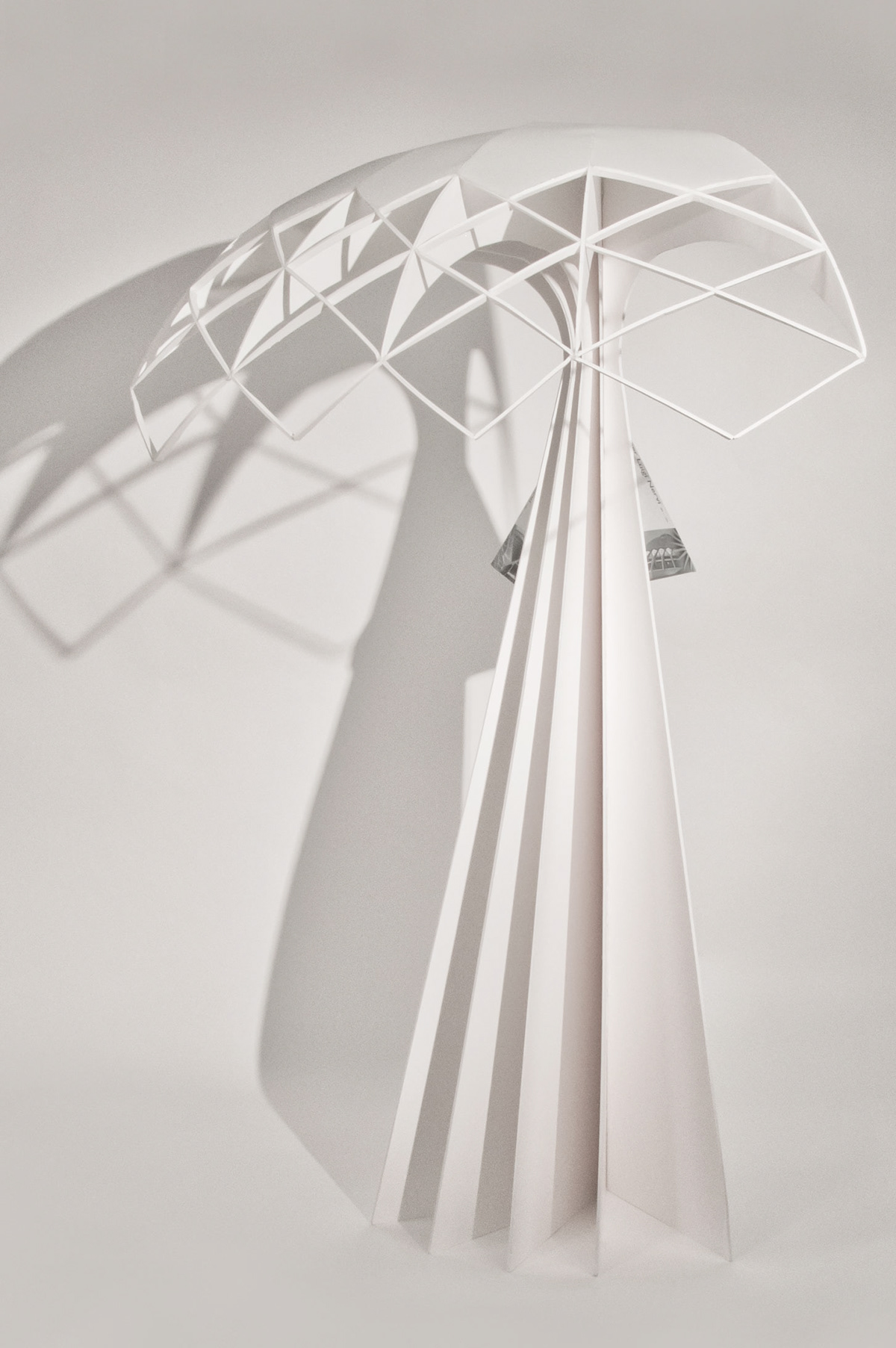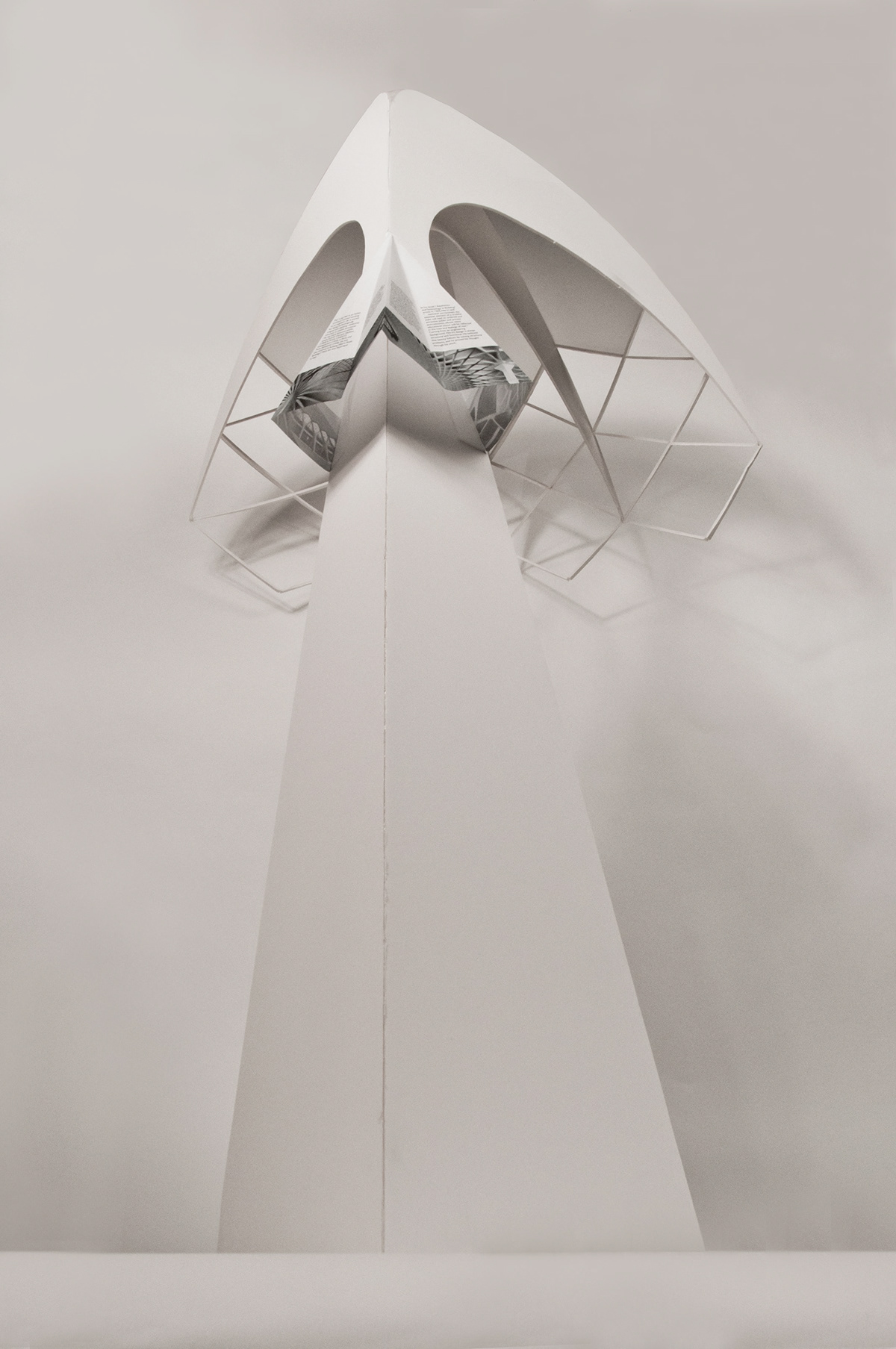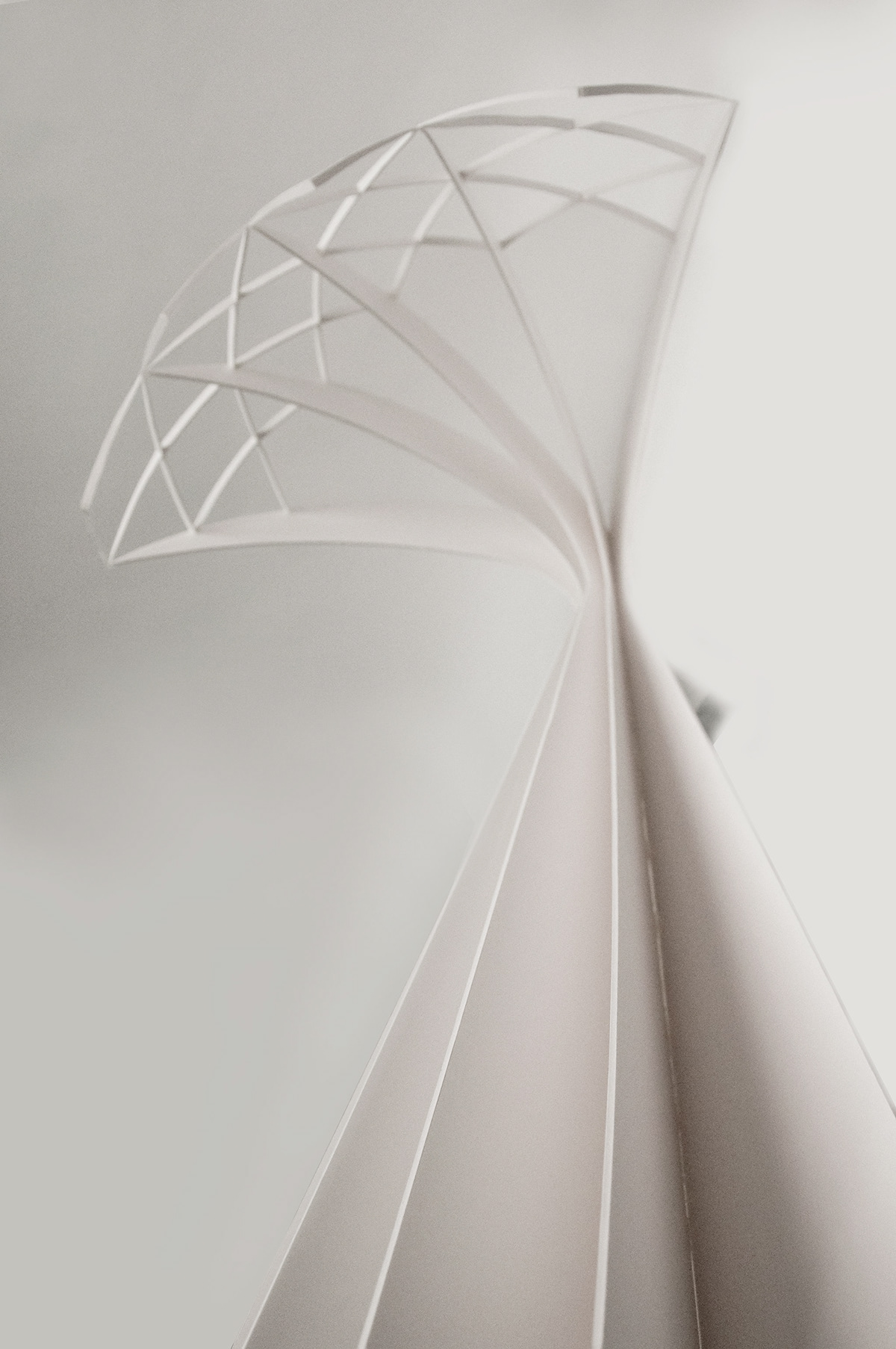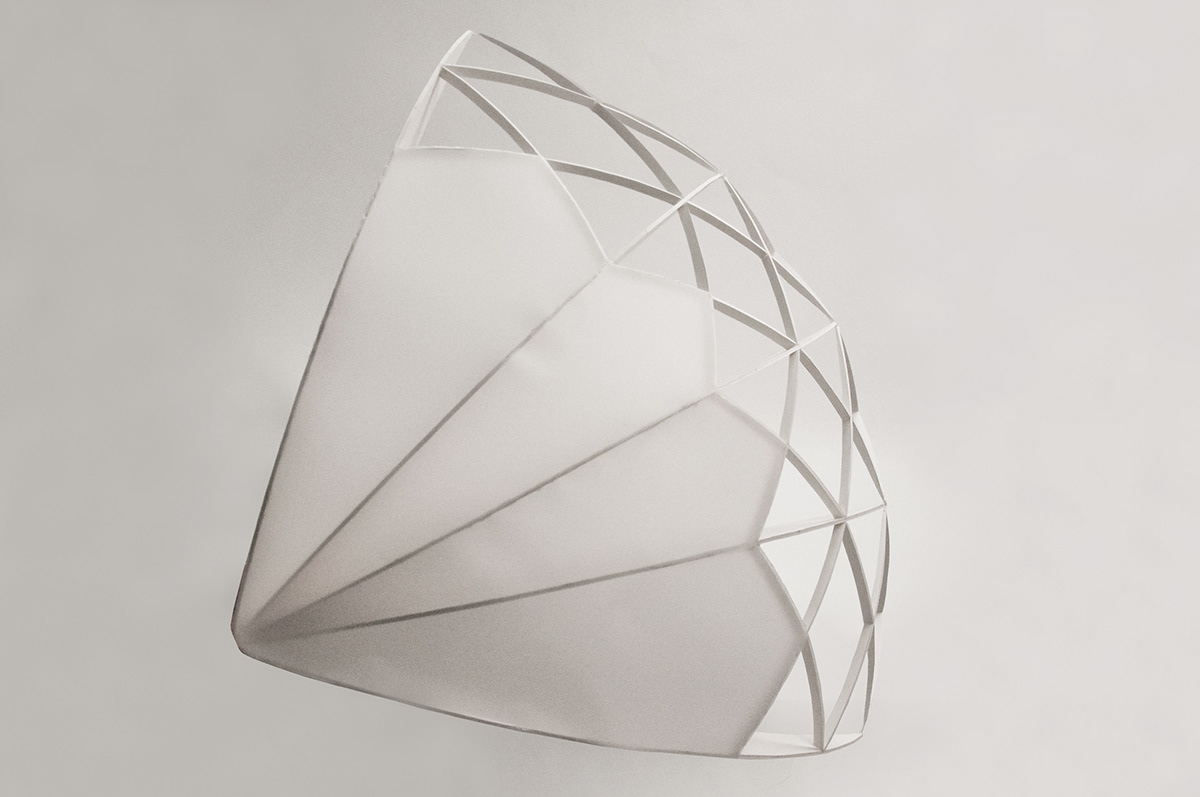Reinterpretation of Pier Luigi Nervi's Work
This was a 4 week class project that was exhibited in Fall 2011. The limitation was that the bottom had to fit in 1 ft x 1 ft square, and the height had to be under 8 ft.
Pier Luigi Nervi (June 21, 1891 – January 9, 1979)
Pier Luigi Nervi, an Italian architect, started working asan engineer. He is known for being technologically original and applyingreinforced concrete to sizable structures. He has many featured works, whichinclude Olympic Stadium (1960) in Rome, UNESCO headquarters (1950) in Paris,and Turin Exhibition (1950). He was also involved in building Milan’s PirelliBuilding (1955), the first skyscraper in Italy.
Many of Nervi’s buildings have elements that Gothiccathedrals have such as ribbed vaults, clustered columns, and buttresses. Alsothe ceilings or roofs are often arched in his building. Eyes of a viewer frominside of his building mostly would start from the bottom of columns orbuttresses led up to the ceiling that is the most energetic.
Nervi prefabricated simple geometry to solve structuralproblems that resulted in his unique design. Nervi’s designs are mostlycomposed of repetitions of geometric shapes, which make his designs to besimple but to have dynamic compositions. Also because of fairly large spanbuildings and his use of martial, reinforced concrete, his work looks static,but from the geometric repetitions, his work looks delicate and light. Overall,his designs result in symmetry and uniformity.
In his book, “Aesthetics and Technology in Building” wrotein 1965, Nervi said: “…technical correctness, the essential element of atruthful style, will lead to ordered and attractive public and privateenvironments, whose silent educational action will be reflected in the livesand feelings of men.” Coming from an engineering background, Nervi’s design isalways structural and functional. He believed that beauty follows by solving structuralproblems, and he proved his thought through his work.
Pier Luigi Nervi, an Italian architect, started working asan engineer. He is known for being technologically original and applyingreinforced concrete to sizable structures. He has many featured works, whichinclude Olympic Stadium (1960) in Rome, UNESCO headquarters (1950) in Paris,and Turin Exhibition (1950). He was also involved in building Milan’s PirelliBuilding (1955), the first skyscraper in Italy.
Many of Nervi’s buildings have elements that Gothiccathedrals have such as ribbed vaults, clustered columns, and buttresses. Alsothe ceilings or roofs are often arched in his building. Eyes of a viewer frominside of his building mostly would start from the bottom of columns orbuttresses led up to the ceiling that is the most energetic.
Nervi prefabricated simple geometry to solve structuralproblems that resulted in his unique design. Nervi’s designs are mostlycomposed of repetitions of geometric shapes, which make his designs to besimple but to have dynamic compositions. Also because of fairly large spanbuildings and his use of martial, reinforced concrete, his work looks static,but from the geometric repetitions, his work looks delicate and light. Overall,his designs result in symmetry and uniformity.
In his book, “Aesthetics and Technology in Building” wrotein 1965, Nervi said: “…technical correctness, the essential element of atruthful style, will lead to ordered and attractive public and privateenvironments, whose silent educational action will be reflected in the livesand feelings of men.” Coming from an engineering background, Nervi’s design isalways structural and functional. He believed that beauty follows by solving structuralproblems, and he proved his thought through his work.





